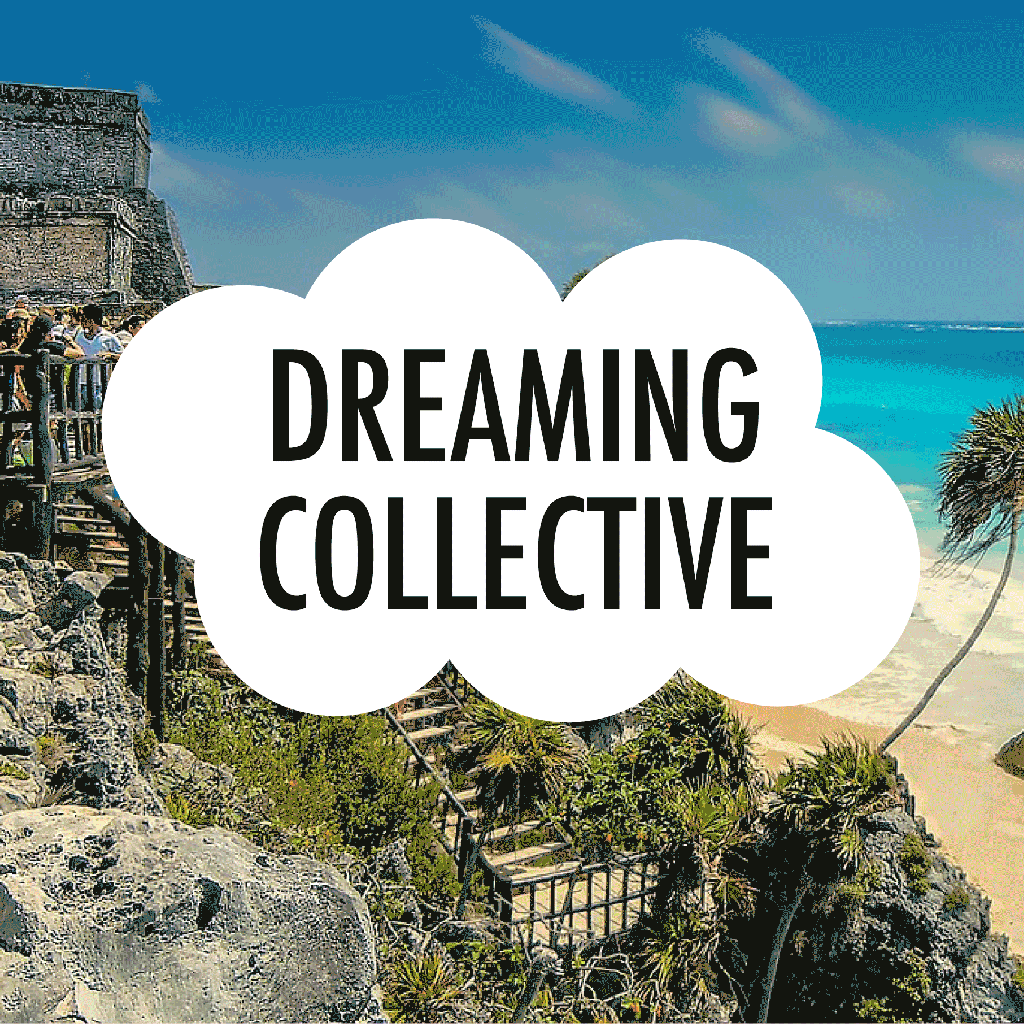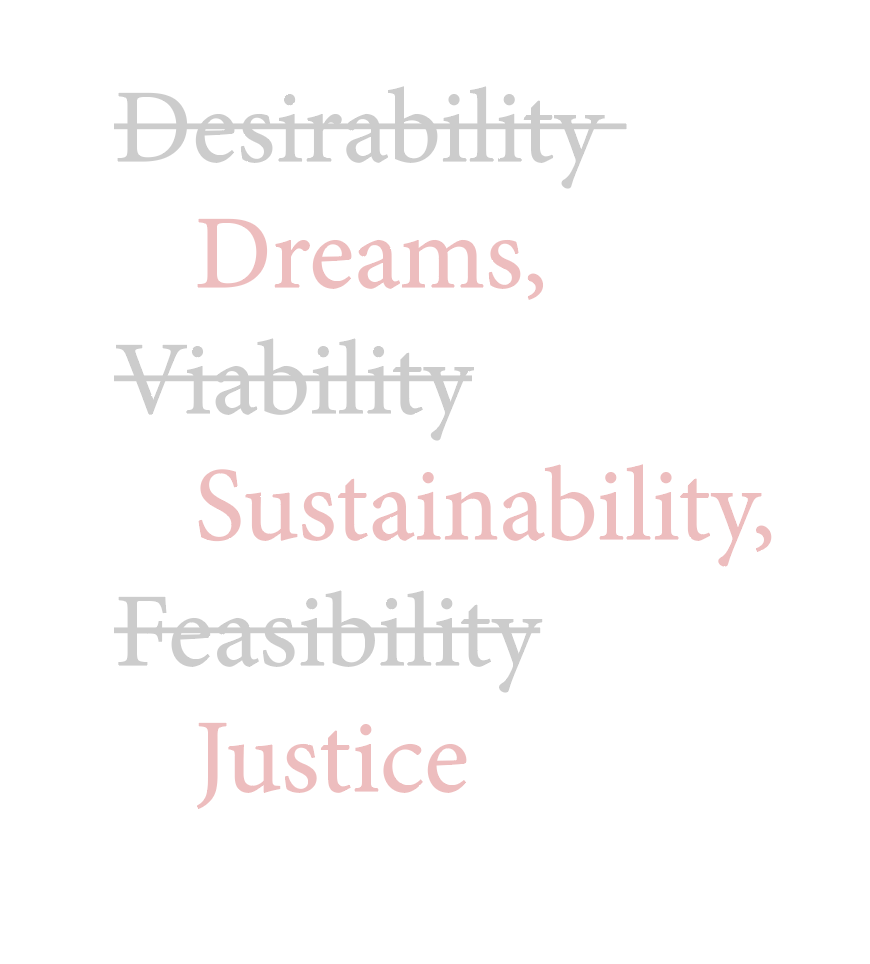
Dreaming Collective is a collaborative, distributed research and design studio that centers dreams as a source for alternate world-making and liberatory imagination.
Dreaming Collective is an anti-technological dream tank.
Our aim is to disrupt utopia/dystopia narratives that permeate thinking among designers, architects, futurists, technologists, innovators and future workers by developing new research tools based in art and conversational intimacy. It is also a deeply intimate project that explores the vulnerability of conversations, the commonality of shared and private experiences, including those of complete strangers, and of potential collaborators (like you).
Seeking connection and creative partners during years of isolation, we embarked on this project to learn from strangers, interview them about their dreams, and turn them into artwork that envisions new worlds, much like design thinkers and futurists use insights and signals to develop scenarios and innovations that have sometimes dire material and social consequences. We spoke to dozens of dreamers, across five continents and mapped out the common themes in their dream narratives here.
Dreaming Collective is a platform for creative partnerships that create and generate works and stories that retell and re-present the dreams of the collective. It is also an exercise in the pursuit of a new design process, one that centers justice, sustainability, and shared humanity.
GOALS
The project aims to explore alternatives to our lived reality from a non-technological standpoint by centering the potential of dreams rather than networks, code, or hardware. Nobody dreams about their phone. And yet, in the 21st century the amount of labor, knowledge, and capital being pooled into building virtual infrastructure feels infinite.
WHY
It is far too easy to rely on technology fixes to solve for problems more likely related to underinvestment, under-resourcing, structural racism, political conflict, impatience, stagnant wages, or a lack of care on the part of decision-makers. Full stop. But dreams are only a starting point, because those, too, are saturated with desires that support or are endemic of ruling ideologies.
THEN WHAT
We’ll rely on dreams as the input for identifying objects of study, or artifacts. Our goal will be to map a utopian landscape iteratively, through writing, architecture, illustration, collage, installation, experiments, prototypes, books, zines, words, events, things.
METHODS

Non-Technological Dreams
We explore desirabilty by focusing on dreams rather than wants or needs. We also prioritize dreams that are non-technological. What are the things people really wish for and imagine?
Can dreams be untethered from tech companies or other non-public entities? Who owns a dream?
Anti-Disruptive Sustainability
We measure the sustainability of an idea by judging how it fits into communities rather than how disruptive it is. How can we bring dreams to life in ways that help communities thrive?
Who is present in this dream, and how do we ensure that others are not erased?
Counter-Exploitative Justice
We center justice and counter-exploitation in our design and decision-making by considering potential harm, opportunities for liberation, instances of self-determination and potential for the abolition of structures of injustice and extraction.
How can we ensure that one person’s dream does not harm others? How can a dream be used in service of a more equitable future?
ABOUT ME

James Estrada is an innovation director, painter, design strategist, and 2D object-maker who uses religious icons, consumer objects, and historical and scientific forms to tell stories about dreams, family histories, his own Colombian heritage, and imagined futures. His research process relies on building conversational intimacy with strangers, family members, and other artists through interviews, micro-commissions, and collaborative social programming. His art invites viewers to consider how sacred objects, dreams, migration, and technology affect our sense of place and feelings of belonging.
Learn more about his art practice here: